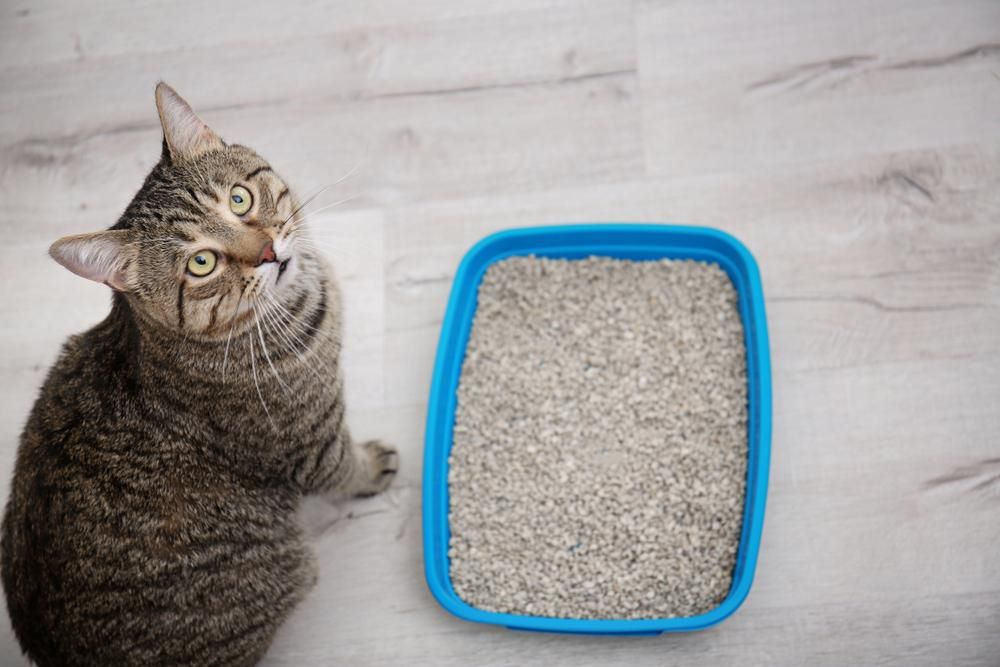

If you share your life with a cat, you've likely experienced a litter box problem or two. Inappropriate urination is common and has many causes. One urinary tract ailment that's rarely in the spotlight, however, is bladder stones in cats. Read on to learn all about feline bladder stones, including types and causes, how stones differ from urinary crystals in cats and how to prevent bladder stones or urine crystals.
Basic Facts About Bladder Stones in Cats
Bladder stones, or uroliths, occur when minerals accumulate and harden in your cat's urine. Urinary crystals are the precursor of stones. Stones and crystals can occur anywhere along the urinary tract, from the kidneys to the urethra — the narrow tube that carries urine from the bladder to the outside of the body.
Bladder stones come in a range of sizes, from tiny to bladder-sized. Some cats may have a mix of small and large stones. While tiny bladder stones can pass through urine without issues, larger stones that are still small enough to pass through the bladder can be deceptively harmful. They can become trapped as they move through the body, typically within the urethra, and interrupt urine flow. If a urinary stone becomes stuck, it can obstruct the urethra and prevent urine flow entirely, known as a blocked urethra. This is a life-threatening condition that requires prompt intervention. It's most often seen in male cats.
Stones also vary in shape and color, presenting with smooth or jagged edges. Bladder stones, especially those with rough edges, can damage the surrounding tissue, cause inflammation and scar tissue, and predispose cats to infection.

Bladder Stones vs. Urine Crystals
Both bladder stones and crystals are solid mineral waste in the urine. However, as the precursor of stones, crystals are smaller. In fact, urinary crystals in cats are invisible to the naked eye. When crystals clump together and grow, becoming visible without a microscope, they're considered a stone.
While crystals often pass without issue, larger concentrations of crystals can mix with mucus to form a urethral plug, causing a urinary blockage.
Clinical Signs of Bladder Stones in Cats
Cats with bladder stones display different signs depending on where the stones are located in the urinary tract. Many times, cats with bladder stones exhibit no signs at all. Other times, the stones cause bladder irritation or infection, which may present as:
Making frequent trips to the litter box
Producing blood in the urine
Vocalizing while urinating
Urinating outside the litter box
Dribbling urine
Decreasing urination
If you notice your cat unsuccessfully trying to urinate, visit your veterinarian or local pet emergency clinic right away.
What Causes Cat Urinary Crystals and Stones?
Certain environmental conditions in the urinary tract can promote bladder stone development, such as abnormal pH or inflammation. While the causes of stone formation are complex, nutrition may play a role by causing a high concentration of salts in the urine. Since fluids help dilute urine, dehydration can also increase your cat's risk of developing crystals and stones.
Bacterial infections, such as urinary tract infections, can also lead to bladder stones.
Types of Bladder Stones in Cats
The two most common bladder stones in cats are calcium oxalate stones and struvite stones. Your vet may be able to tell which type of stone your cat has through an ultrasound, radiograph or microscopic exam of urine sediment. In some cases, however, stone type can only be identified upon removal.
Calcium Oxalate Stones
Calcium oxalate stones are the most common urinary stone in cats, forming in overly acidic urine. They're most often seen in older cats, particularly neutered male cats.
Certain breeds may be more likely to develop calcium oxalate stones, including the Ragdoll, British Shorthair, Himalayan, Persian and Scottish Fold. They may be seen in cats with kidney disease or elevated blood and urine calcium levels secondary to a condition called idiopathic hypercalcemia (high calcium in the blood).
Struvite Stones
Struvite stones are typically found in younger to middle-aged cats and appear more common in female cats. Unlike calcium oxalate stones, struvite stones tend to form in highly concentrated alkaline urine.

Treatment and How to Prevent Bladder Stones or Urine Crystals
Treatment for bladder stones depends on stone type, size and severity. Calcium oxalate stones usually require surgical removal and may require management to resolve the underlying condition. Once the stones have been removed, your vet will likely recommend switching your cat to a food formulated to reduce urine mineral content and increasing their water intake to help prevent recurrence.
A special prescription food may help with struvite stones. Cat food for crystals in urine is widely available in various flavors and forms. In some cases, your vet may suggest offering your cat a wet food version of the recommended prescription food to support hydration.
Talk to Your Vet About a Treatment Plan
Difficulty urinating, crying in the litter box and frequent litter box trips are all signs of urinary disease. While you don't want your cat to be diagnosed with bladder stones, the outlook for both stones and crystals is encouraging. After initial diagnosis and treatment — whether through surgical removal for calcium oxalate stones or dissolution via nutritional therapy for struvite stones — your veterinarian may suggest therapeutic nutrition to support your cat's long-term urinary health. Together, you and your vet can determine the best approach to keep your cat's stones at bay.






















